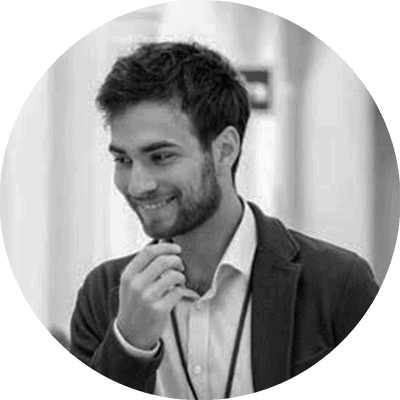
Leonardo Tedeschi – Innovation in Urban Space Transformation Area Coordinator, Fondazione Innovazione Urbana
Leonardo is an architect specializing in social enterprise management. He has experience in urban regeneration projects and has worked with local administrations, agencies, and associations. Leonardo has been working at Fondazione per l’Innovazione Urbana since 2018. Today he coordinates the Innovation in Urban Space Transformation area, where he is mainly involved in projects related to public space, focusing on the relationship between territory, environment, community, and project.
Q: How does Fondazione per l’Innovazione Urbana (FIU) address urban challenges?
LT: At FIU, we aim to create an ecosystem of innovation in cities through participatory practices and engagement. We adopt a systematic approach to co-design and co-creation to address urban challenges. As a result, the foundation serves as a permanent laboratory for experimentation and collaborative solutions. It also establishes relationships with the city in various ways, adapting its approaches based on the different opportunities and scenarios.
Overall, the foundation embraces four main roles to facilitate participatory practices. It acts as a “megaphone” to amplify projects, decisions, and procedures, ensuring transparent information flow and reaching a broad audience through multi-channel communication. It also functions as an “antenna” and catalyst for gathering needs, ideas, and proposals from diverse stakeholders within the city. Through active listening and dialogue, it identifies solutions and facilitates collaboration and co-design of new proposals, positioning itself as an “arena“ to create a network of the city’s resources. Finally, the foundation serves as a place for co-production, service prototyping, and project realization, transforming ideas into tangible outcomes. It is, therefore, a “factory” that initiates experiments leading to change and implementation.
Throughout our work at the foundation, we emphasize proximity in terms of physical scale and prioritizing social and human capital in public decision-making processes. By embracing proximity, we strive to create a more inclusive and people-centered approach to urban transformations.
As a result, the foundation plays a crucial role in fostering innovation, participatory practices, and collaboration to address urban challenges and create positive change in the city.
Q: What are the most significant FIU projects involving participatory design and user engagement to improve the urban environment?
LT: At FIU, we have undertaken two projects incorporating data, technology, and community involvement. One is about transforming an anonymous street space in Bologna into the city’s first school square on Via Procaccini. Through observation and monitoring, the project’s positive impact was measured and communicated to residents, leading to a shift in mindset and the redirection of city policies towards public space.
The project aimed to create a temporary pedestrian space that would provide students with increased autonomy and safety during their daily journeys between home and school. The transformation process, completed in approximately three weeks, involved pedestrianizing an area of around 300 square meters using colorful ground paint, signage, bike racks, benches, ground-drawn games, and plant containers.
The project actively involved students from the School Testoni Fioravanti, who contributed to the design of games, ground writings, and signs. Their proposals aimed to emphasize inclusivity, freedom, friendship, and unity. Multilingual ground writings, such as “hello” in the 13 main languages spoken in the area, and phrases like “All you need is love,” “Never give up,” and “Never say never,” adorned the space.
Following the inauguration, observation and monitoring activities were conducted, analyzing people and vehicle flows through camera systems. These activities were carried out in collaboration with Transform Transport as part of the European project EX-TRA.
The outcomes of these monitoring efforts, along with additional information and project-related photos, are published on the foundation’s website.
The other project Urban Innovation Lab involves mapping and data visualization for communication and dissemination.
Q: How did Urban Innovation Lab come to life?
LT: Palazzo d’Accursio, located in Piazza Maggiore, is the historic seat of the Municipality of Bologna. It has always been the hub and symbol of public life, a place for exchange, participation, and meetings between citizens and the administration. Within some of the ground floor spaces of the Palazzo, the foundation has embarked on a process of rethinking and renovating the rooms between Palazzo d’Accursio and Salaborsa, giving life to the Urban Innovation Lab project.
The Urban Innovation Lab is a multimedia installation that has emerged from extensive research, design, and setup processes. It unfolds both in the outdoor and indoor spaces of the Palazzo, covering an area of approximately 400 square meters. It presents an original narrative of the city and its transformations. Through the extensive use of new technologies, the journey offers high interactivity, placing visitor participation at the core of the co-construction of the urban dimension’s narrative.
More information, pictures, and a guide to the visit are published on the foundation’s website.